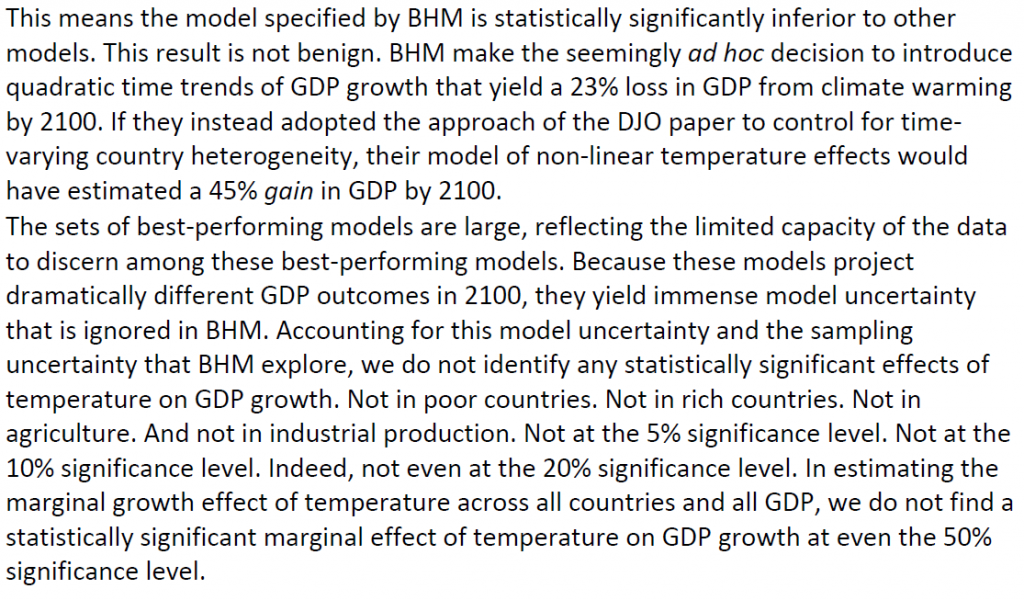I will refer you later to a much larger work I’ve put together on “everything you need to know about the economics of climate change” … and among the key uncertainties are:
- What is the equilibrium climate sensitivity (i.e. long-term feedback)? There is zero consensus on this. (“feedback”)
- What is an appropriate way to count costs and benefits that occur next year or ten years from now or hundred years from now, and for how many years ought we count? (“discount rates”)
- What is the relationship between temperature and GDP? Is it exogenous? Do temperature changes impact levels of economic activity? Growth rates of economic activity? And what of adaptation? How are these affects distributed across economic sectors, across and within countries (“GDP vs. Temp”)?
- How do climate damages (and mitigation efforts) fit into the large category of potential disasters that will befall humanity? Does it make sense to spend a little bit of resources on all of them? A lot of resources on what we think are the most serious? (“Precaution and Resource Scarcity”)
- What are the likelihoods of effective mitigation, adaptation and climate reversal policies and technologies going forward? (“Exogeneity”)
- What are the unintended / hidden benefits that would accrue in a warming world? For example, we know international migration is one of the most incredible anti-poverty tools we have. How does this fit into our understanding of displacement due to climate change? Are there other benefits and costs that are getting short shrift? (“Net effects”)
- Modeling uncertainty and constraints on the GCM (climate) side.
- Modeling uncertainty and constraints in the IAM (economic impacts) side.
There are several more, but those are the big ones. We can bore with the scientific side if you wish. If I HAD to make ONE public service announcement about climate (and many things we think about for policy) is that we all spend way too much time focusing on first moments and not nearly enough time on second and higher-order moments. To sound less fancy, more on variance and less on measures of central tendency. I think any reasonable reading of the climate literature will demonstrate that the central tendency scenarios are not going to be too problematic. What is unfortunate about our political and university discourse is that we are forced to play on that playground, and not the more important and more nuanced second order ground. We care about the tail risk, we care about the variance in outcomes. And our policies ought to be deeply concerned about that, the way we think of insurance and reinsurance, and not the way we think about investing in stock index funds over a career.
I introduce into this conversation this new short paper (in response to a response on a new and important long paper) that explores the relationship between changes in temperatures and changes in economic activity. The upshot is that there is an incredible amount of variance/uncertainty in the models we use to connect temperature to GDP changes, just as there are in so many other aspects of our modeling. The bombshell is that of course the “popular wisdom” is that temperature changes WILL be bad for both GDP levels and GDP growth AND that these temperature impacts WILL be bad for all economic sectors in all countries. Now, my reading of the extant climate and climate-economics literature outside of this specific set of papers has been that to the extent there will be damages of consequence, they will be concentrated in warm and poor countries, and really only in a few economic sectors. So you can see why the stakes are so high.
More to come, but I leave you with this:

Life is what you make it
I look forward to reading whatever you have planned.